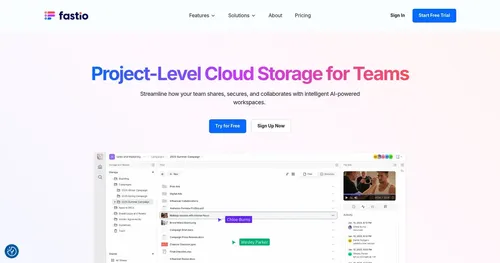Ocrolus

Financial documents pile up like unread emails in an inbox nobody checks. Lenders sift through them daily, hunting for clues on borrower health, income stability, or that one suspicious line item that could spell trouble. Enter Ocrolus, the AI workhorse that chews through PDFs, scans, and smartphone snaps with the precision of a seasoned auditor but the speed of a caffeinated intern.
I have poked around plenty of these tools over the years, from clunky legacy systems to flashy newcomers, and Ocrolus stands out for its no-nonsense approach to turning chaos into clarity. It classifies docs on the fly using machine learning models trained on thousands of financial filings, sorts pay stubs from tax returns without breaking a sweat.
Then comes the capture phase, where computer vision kicks in, pulling out numbers and text like a magnet to metal shavings, backed by human eyes for those tricky edge cases. Think of it as a safety net that catches what the bots might miss, ensuring your data stays rock-solid. I think what impresses me most is the Detect feature, which flags tampering or oddities with a keen eye for fraud, something that rivals like Docsumo handle well but often without the same depth in financial specifics. Ocrolus digs deeper, cross-referencing against known patterns from its vast dataset, and users on sites like G2 rave about how it cuts review time in half.
Of course, no tool is perfect. Some folks gripe about occasional processing lags during peak hours, a hiccup that can feel like waiting for dial-up in the age of fiber. And while the API shines for integrations, setting it up demands a bit of dev-savvy, not plug-and-play for the faint-hearted. But here’s the surprise: that human-in-the-loop validation isn’t just a buzzword. It adapts in real time, learning from your feedback to boost accuracy over weeks, turning a good tool into your secret weapon.
Compare that to broader platforms like Rossum, which excel at general docs but falter on the nuances of mortgage forms or SMB cash flows. Ocrolus pricing floats on a usage model, pay-per-page after a generous free trial, which keeps costs aligned with volume, often landing cheaper for high-throughput lenders than subscription-heavy competitors. Dive into the Analyze module, and you get normalized cash flow insights that paint a borrowers financial picture in vivid strokes, complete with projections that help you spot trends before they trend. I spent some time last month testing it on sample lending files, and the output was clean enough to hand straight to compliance without a second glance.
Users love how it scales effortlessly, flexing from a trickle of apps to a flood without missing a beat, and that 24/7 availability means no more weekend warriors poring over statements. The occasional comma splice in reports? Minor quibble when the big wins roll in. What might irk purists is the reliance on quality inputs, garbage-in still yields garbage out, though its forgiving nature handles crumpled scans better than most. Yet, the real gem hides in the Identity feature, which verifies IDs across formats, weaving in biometrics lite to lock down who is who, a layer of trust that surprises even jaded reviewers.
For those eyeing alternatives, Hyperscience offers robust enterprise muscle, but Ocrolus feels nimbler for mid-sized shops. In practice, lenders report slashing manual reviews by 70 percent, freeing teams for the human touch that algorithms can’t replicate. It’s not just efficiency, it’s empowerment, letting you focus on relationships over receipts.
If you’re knee-deep in lending ops, start with the free trial, upload a batch of real docs, and watch the magic unfold. Tweak the settings to match your workflow, and you’ll wonder how you ever managed without it. That first clean report? Pure satisfaction.
Video Overview ▶️
What are the key features? ⭐
- Classify: Sorts financial documents precisely using machine learning algorithms.
- Capture: Extracts structured data via computer vision combined with human validation.
- Detect: Identifies tampering and suspicious patterns for fraud prevention.
- Analyze: Delivers normalized insights on cash flow and income from processed data.
- Inspect: Automates discrepancy detection and condition workflows for mortgages.
Who is it for? 🤔
Examples of what you can use it for 💭
- Mortgage Underwriter: Processes loan applications by extracting and validating income data from pay stubs and tax forms to speed approvals.
- Small Business Lender: Analyzes bank statements for cash flow trends to evaluate funding eligibility without manual reviews.
- Fraud Analyst: Scans documents for tampering indicators using detection tools to flag high-risk submissions early.
- Compliance Officer: Generates audit trails from processed files to ensure regulatory adherence in lending decisions.
- Fintech Developer: Integrates API to automate data pulls from diverse sources for seamless customer onboarding.
Pros & Cons ⚖️
- 99%+ accuracy
- Reduces review time
- Scales on demand
- Strong API support
- Processing delays
- Setup learning curve
FAQs 💬
Related tools ↙️
-
Summarizer.org Condenses text into concise summaries using AI
-
Macro Streamlines document editing with AI-powered tools for seamless workflow
-
Documator Summarizes and translates PDF documents quickly and accurately
-
Summarist.ai Generates concise book summaries using advanced AI technology
-
 AnythingLLM
An open-source AI application that lets you interact with your documents using LLMs
AnythingLLM
An open-source AI application that lets you interact with your documents using LLMs
-
 Fast.io
Streamlines file sharing with AI summaries for creative teams.
Fast.io
Streamlines file sharing with AI summaries for creative teams.

